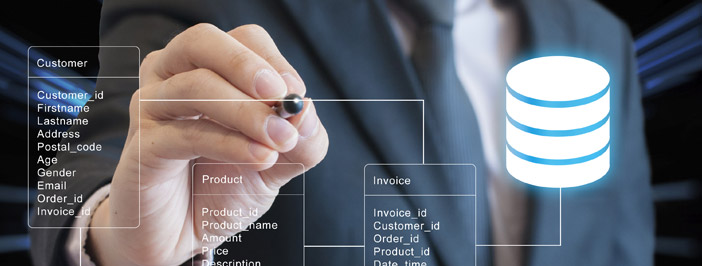The Relationship Between Cloud Computing, SaaS & ERP
Back in 2015, we addressed the key benefits of cloud computing as they pertain to accounting and financial management. A few of these benefits are reduced licensing and hardware expenses, increased flexibility, and remote access and productivity.
Now, we’re taking the time to clarify some key buzzwords that have become prevalent over the past two years. It’s important to understand the umbrella of cloud computing, and how ERP software fits into the bigger picture:
What is Cloud Computing?
Most simply and generally speaking, cloud computing means storing and accessing data and programs over the internet instead of your computer’s hard drive. To be considered cloud computing, you need to access your data or programs over the internet; or at least have data synced with information over the internet. What truly differentiates cloud computing is that it can be done anywhere, anytime.
While a bit more technical in jargon, the U.S. Department of Commerce’s National Institute of Standards and Technology (NIST) defines cloud computing as “a model for enabling ubiquitous, convenient, on-demand network access to a shared pool of configurable computing resources (e.g. networks, servers, storage, applications, and services) that can be rapidly provisioned and released with minimal management effort or service provider interaction.” They characterize the cloud model by on-demand self-service, broad network access, resource pooling, rapid elasticity, and measured service. Users can access server and network storage as needed from any connected device, regardless of location, at any scale.
Perhaps most relevant to our industry, the American Institute of CPAs (AICPA) defines cloud computing as “an innovative and increasingly popular model of software deployment that offers enterprise-class software function without traditional up-front infrastructure costs or the unpredictable support and maintenance costs of on-site software and hardware.” They also note there are many cloud-based applications available in nearly every segment of the software marketplace.
What is a Cloud Application?
A cloud application, or cloud app, is a software-as-a-service (SaaS) program that can run on multiple computers or devices, and is typically used for redundancy. Or in other words, a cloud app is an online SaaS with at least two servers and is designed to scale and support multiple users.
Cloud apps are just one element to cloud computing. It’s important to keep in mind that while your SaaS app may be running in the cloud, it’s not the cloud itself. Cloud computing consists of network capacity, virtualization and server capacity, and applications and services. Cloud computing and cloud applications are not to be confused or used interchangeably.
What is Software-as-a-Service (SaaS)?
Cloud applications and SaaS can be used interchangeably, though. Software-as-a-Service (SaaS) is a software model in which a third-party provider hosts applications and makes them available to customers over the internet. Instead of installing and maintaining software locally, SaaS software is securely accessed through a PC or mobile device.
Since SaaS is a cloud application, it offers the same benefits as cloud computing. You can access the program on-demand, from any connected computer. Data isn’t lost if your computer breaks because your data is backed up to the cloud. And, the service is able to dynamically scale to meet the needs and flexibility requirements of your business.
Cloud Computing, SaaS & ERP
In our latest blog about ERP consulting, we discussed what ERP is: a category of business software used to automate a slew of back-office functions.
ERP softwares such as Sage Intacct and Microsoft Dynamics are SaaS. Sage Intacct is predominantly a cloud accounting and financial management software, while Microsoft Dynamics GP and 365 are both predominantly operations focused. However, all three softwares offer cloud computing benefits.
Some ERP and accounting softwares have hybrid and/or on-premise deployment models, but on-premise only is not scalable and often costs a lot more than SaaS licensing. As mentioned in our opening statement, a major benefit of cloud computing is the low cost related to hardware and installation; with cloud applications receiving patched updates at typically no additional expense to the end users.
If you’d like to learn more about the features and benefits of Sage Intacct and Microsoft Dynamics, and to learn how ERP and SaaS can improve your productivity and benefit your business, contact us at Alta Vista Technology. We’re happy to answer your questions, and clear up any more confusion you may have about cloud-related buzzwords.



